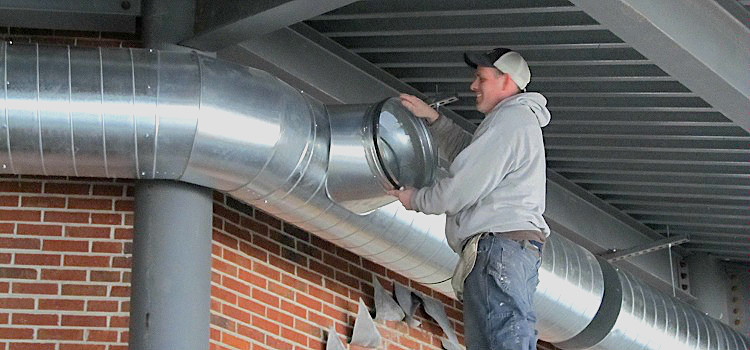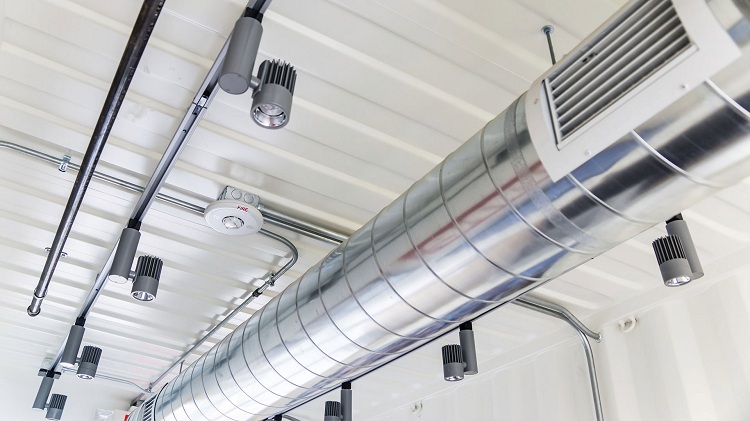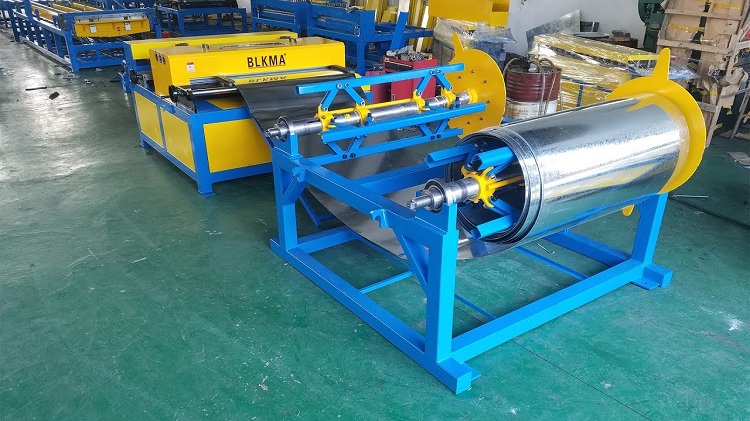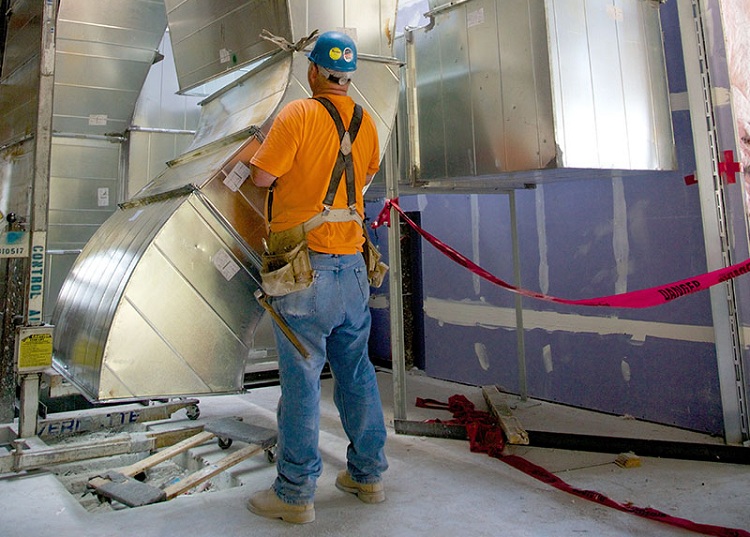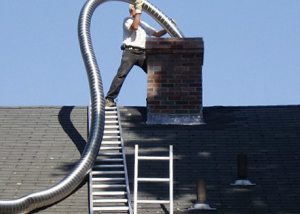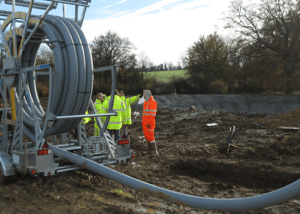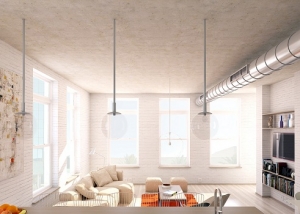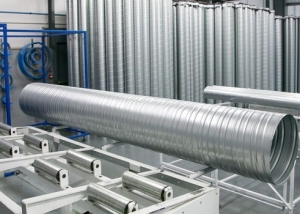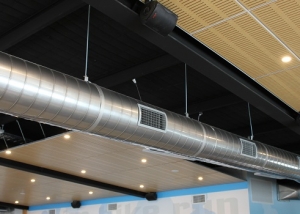The main function of the ducts is to supply clean air in a given direction, as well as moving gas-air mixtures. They differ in the installation method, material, length, size and shape of the section. Often, a single ventilation scheme is implemented on the basis of such elements of various types, providing for the creation of branches, branches and sleeves. The most widespread today are semi-rigid and rigid ducts for ventilation.
Content
The main types
The classification of ventilation ducts is carried out according to certain criteria.
Place of installation.
- ventilation shafts (built-in air ducts). Settled inside the concrete or brick walls of the house. They work normally provided that the inner surface of the channel is smooth and there are no obstacles to the free circulation of air masses, for example, influxes of solution. Periodic cleaning of this type of ventilation system is carried out through the bottom of the shaft: there is a special technological hole.
- external ducts. They are made in the form of hanging or attached boxes, for the assembly of which shaped elements and pipes of various sizes and shapes are used. The choice of such components of the air exchange system is determined by the general design of individual rooms and the structural features of the building.
The material of manufacture.
- metal ducts made of various aluminum alloys, as well as stainless or galvanized steel. They are characterized by fire resistance, the greatest strength, durability of use and ease of installation;
- plastic pipes made of high-tech polypropylene. This material is environmentally friendly and highly durable. The main advantages of the plastic ducts of the ventilation system are a long service life, ease of installation and repair, tightness, wear resistance, high anti-corrosion properties, low weight and the same cost. Disadvantages - low level of resistance to high temperatures and mechanical shock loads;
- flexible ducts from aluminum-polymer corrugated sheet reinforced with steel wire, or from polymeric materials. They are characterized by significant aerodynamic resistance to the movement of the air mass and, if we take for comparison the usual smooth pipe, increased noise during operation.
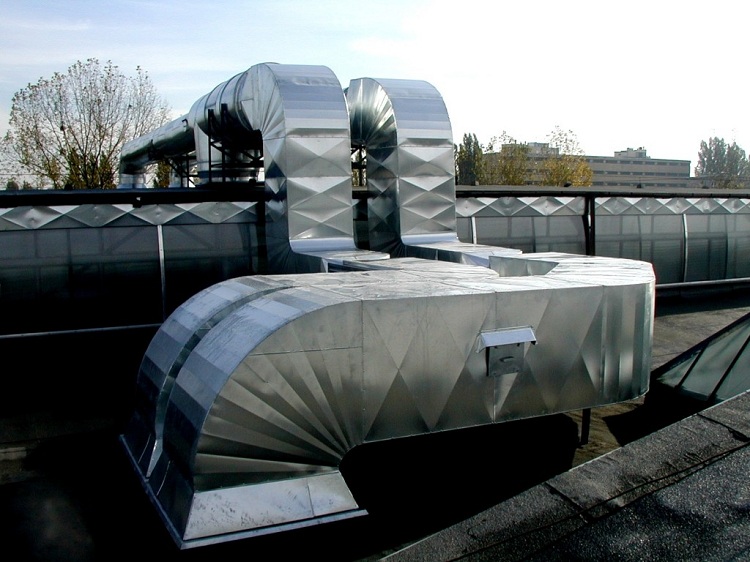
In industrial conditions and where large volumes of air with a high speed of movement are needed, metal ducts are used
Advice! Therefore, install ducts for ventilation of this type on small sections of pipelines: on branches, bends, in hard-to-reach places. Connect the various elements of the created system to the air ducts using flexible corrugated pipes.
The shape of the internal section of the channel.
- round. Gained the most widespread use because of the convenience and practicality of production and installation. In addition, mathematical calculations and experimental data confirm the fact that ventilation, if the ducts are round, is much more efficient. The reason for this phenomenon lies in the fact that such a section is characterized by the least aerodynamic resistance to air flow. Docking of pipes with fittings is carried out using external couplings or nipple joints providing high tightness of the channels.
- rectangular. They are able to fit comfortably and harmoniously into the interior of a room of almost any style, especially where the ceiling height is small. However, compared with the previous version of the air ducts, they are more time-consuming in production and during installation, and also have worse aerodynamic characteristics. Pipes are connected to each other and to shaped elements using splint rails, mounting angles, latches and flanges.
Manufacturers offer a wide range of similar products. In general, the price of ventilation ducts depends on the overall dimensions and material of manufacture.
Traditional solution
All stages of the design, production and installation of rectangular and circular channels are regulated by numerous documents, including TU 36-736–93. It contains conditions applicable to metal ducts.
Most market participants produce these products from galvanized cold-rolled sheet steel with the following parameters: per 1 square. a meter of material accounts for 200 ... 400 grams of zinc, and the sheet thickness in this case ranges from 0.5 to 1.4 millimeters. Correspondence of ventilation metal ducts TU 36 736 93 provides for the possibility of transporting gas-air mixtures with a relative humidity not exceeding 60-80 percent and a temperature not exceeding +80 ۫ С. Ventilation systems with such indicators are suitable for operation in domestic conditions.
If there is a need to transport hotter air flow, use heat-resistant or black steel. When it is supposed to organize the movement of a particularly aggressive gas-air mixture, including wet one, air ducts are installed made of steel coated with a polymer layer, corrosion-resistant sheet steel or aluminum.
On a note! If the room designer wants to focus on the air exchange system, for the sake of design, the best solution is to install channels made of polished copper or other metals.
Design
According to the design, the ducts are of the following types:
- straight-seam. They are also called industrial. They are made of a solid metal sheet 1 ≤ L ≤ 2.5 meters long and 0.5 ≤ S ≤ 1.2 mm thick. The suture connection gives the duct additional rigidity, so the installation of such products is usually practiced on a bend;
- spiral welded. For the production of air ducts of this type, templates with a sheet thickness of 0.75 ≤ S ≤ 2.2 millimeters and a width of not more than 0.75 meters are used. According to the technology, the overlapping edges of the pattern are welded. The result is a tight and durable seam;
- spiral-wound. Another name is castle. They are made from strip (metal tape) with a thickness not exceeding 1 millimeter. The width of the tape is not more than 13 cm. As for the length, it can be any. The strip is folded in two ways - in a ring or in a ribbon. The relative high cost of such a technical solution is offset by a higher quality ventilation system.
Diameter of the duct section
The sizes of these elements depend on the design value of the flow velocity. For residential premises, this parameter is limited to 4 m / s. Otherwise, the noise produced will interfere with the occupants. In the case when the speed is known, the cross-sectional area is determined by the following formula:
Pl.min. = 0.9 × RV, where
Pl.min - the cross-sectional area of the air ducts (minimum) in square centimeters; PB - air flow. The unit is cubic meter / hour.
Such regulatory documents as SNiP 41-01-2003 and BCH 353-86 contain the following requirements:
- The diameter of round galvanized ventilation ducts should not be more than 2000 mm. In relation to lower values of this parameter, the numbers (in millimeters) look like this: 250, 225, 180, 200, 140, 160, 125, 100;
- the cross-sectional size of the rectangular channels ranges from 100 to 3200 millimeters.
The above figures are relevant for all similar products, regardless of what material they are made of. This unification greatly facilitates the selection of elements of the ventilation system.
General installation rules
The requirements for this procedure are written in the following regulatory documents: SP 73.13330.2012 and SP 60.13330. Below are only those that are mandatory.
- flexible ducts must be installed by fully stretching them;
- prevent sagging of ventilation sleeves;
- It is forbidden to lay flexible and semi-rigid elements of the ventilation system if the vertical section covers more than 2 floors;
- in places of contact with the ground, in concrete structures, basements, basement floors, exclusively rigid pipes are installed;
- when performing design and installation work, it must be borne in mind that in a functioning ventilation system the air path looks like a spiral;
- laying the duct through the walls should be performed using special metal sleeves and adapters;
- the duct damaged during installation must be replaced.
Important! At the turns of the track, a radius equal to at least two channel diameters is laid.
Particular attention should be paid to grounding ventilation ducts. After all, the highway has the ability to accumulate static electricity. Therefore, all work must be carried out in strict accordance with the safety requirements and standards established by the PUE.
Grounding ducts is:
- natural - the function of the ground electrode is performed by water conduits, fittings, pipes and other communications;
- artificial - involves clogging the soil of metal elements: corners, rods and other rolled products.
And in conclusion, it is necessary to say one more important rule: the planes of the structures and the center of the ducts must remain parallel relative to each other.
